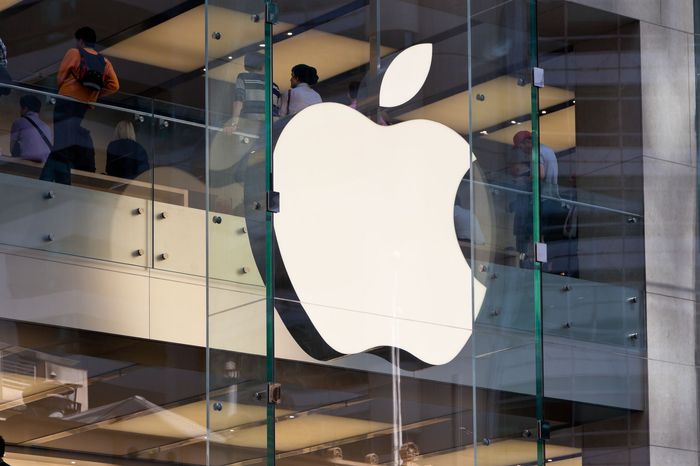
 Portfolio manager Teal Linde has no problem giving props to both Microsoft (Microsoft Stock Quote, Chart, News, Analysts, Financials NASDAQ:MSFT) and Apple (Apple Stock Quote, Chart, News, Analysts, Financials NASDAQ:AAPL) but when it comes to comparing the growth prospects of the two tech titans, it’s Microsoft’s dominance in the software space that should be the difference-maker for investors.
Portfolio manager Teal Linde has no problem giving props to both Microsoft (Microsoft Stock Quote, Chart, News, Analysts, Financials NASDAQ:MSFT) and Apple (Apple Stock Quote, Chart, News, Analysts, Financials NASDAQ:AAPL) but when it comes to comparing the growth prospects of the two tech titans, it’s Microsoft’s dominance in the software space that should be the difference-maker for investors.
“Microsoft and Apple have a lot of similar strengths,” says Linde, manager of the Linde Equity Fund, who spoke on BNN Bloomberg on Monday. “Both are trillion-dollar-plus companies and they generate hundreds of billions of dollars of profit. They dominate their industries and they have very loyal customers.”
Both Microsoft and Apple have amply rewarded investors over the decades, including over the past five years where Microsoft shareholders got a return of 380 per cent while Apple’s five-year return was 400 per cent. Both stocks pay a dividend, as well, with similar yields going from around two per cent a few years ago to now under one per cent.
More recently, over last year’s tumultuous pandemic year in the markets, Apple was the clear winner, gaining 81 per cent for 2020, while Microsoft returned an also-impressive 41 per cent. So far in 2021, Apple is up about five per cent and Microsoft is up ten per cent.
But going forward, Microsoft should be favoured for its potential to grow its software and cloud businesses, Linde says, while Apple’s hardware-focused model may be more limiting.
“To differentiate, in our equity fund whenever we look at a new company the first thing we want to prioritize is, does a company have a superior business model to generate above average rates of return and be able to protect those returns? And if you look at Apple and Microsoft the answer is yes for both,” Linde said.
“The second question we ask is, does the company have enough market opportunity to continue to apply their business model and to grow the business at above average rates of return year after year?” he said.
“And I think from this perspective, if you look at the two companies, Apple generates the vast majority of its profits and and revenues from selling the iPhone to consumers, and I would suggest that consumers are probably fully satisfied with the technology that they’re offered with when they have their iPhone,” Linde said.
“Microsoft focuses on the commercial client, and there’s just a lot more variety of needs, whether it’s efficiency gains or productivity or cost-cutting that companies need from the benefit of software and so there’s still ample runway for growth for Microsoft,” Linde said.
Linde says the revenue growth rates of the two make for an easy comparison, where Apple has been growing their topline on average by rates in the single digits whereas Microsoft has seen double-digit growth in recent years.
“I suspect this is because of the market opportunities both companies have in front of them,” Linde said. “So, Microsoft will probably continue to grow faster than Apple and therefore it would be our preference.”
Microsoft beat analysts’ estimates in its latest quarterly release, the company’s fiscal third quarter, delivered in late April. Revenue growth was very strong for the quarter ended March 31 at 19 per cent year-over-year, the best the company has seen in a number of years. Growth in both PC sales and the company’s cloud computing business were drivers over the quarter. Microsoft hit $41.71 billion in revenue and $1.95 per share in earnings, while analysts had forecasted $41.03 billion and $1.78 per share, respectively.
Forward guidance from Microsoft management was also strong, calling for 16 per cent revenue growth for the fiscal Q4.
“Over a year into the pandemic, digital adoption curves aren’t slowing down. They’re accelerating, and it’s just the beginning,” said CEO Satya Nadella in a press release. “We are building the cloud for the next decade, expanding our addressable market and innovating across every layer of the tech stack to help our customers be resilient and transform.”
The robust quarterly numbers didn’t result in share price growth, however, as MSFT has been falling since the April 27 release, currently down about six per cent since.
That apparent disconnect between the company’s success and the relatively lacklustre return from the stock so far in 2021 has been chalked up to a rotation market-wide out of areas like technology and into areas like financials and energy, which investors are betting on to do well in a post-pandemic scenario.
Some say that makes for a buying opportunity on names like Microsoft. Speaking on CNBC earlier this month, Nancy Tengler of Laffer Tengler Investments said Microsoft is a good bet to rebound from the tech sector pullback.
“Microsoft has sort of been trading sideways, in line with the market this year, but grew revenues at 90 per cent last quarter and raised guidance,” Tengler said. “We like revenues because they’re a fact, so this is a company we want to own for the next three to five years or you want to buy for your grandkids.”
Leave a Reply
You must be logged in to post a comment.






 Share
Share Tweet
Tweet Share
Share




Comment